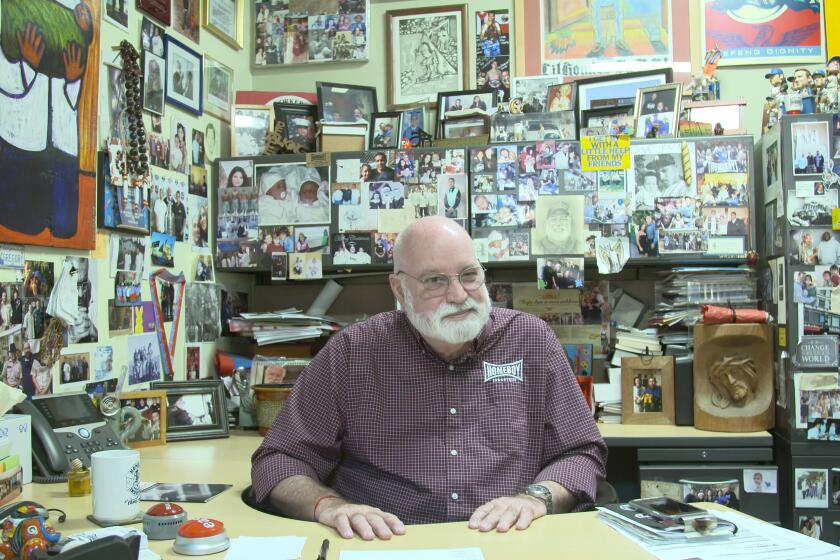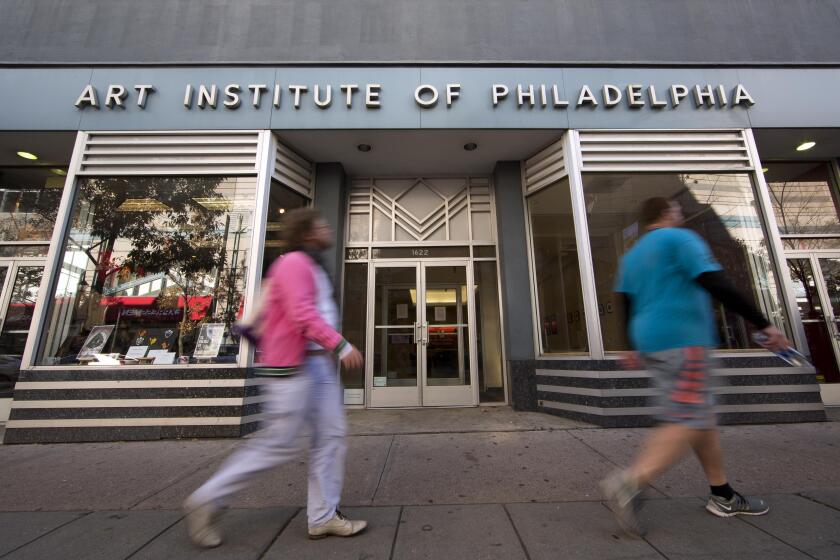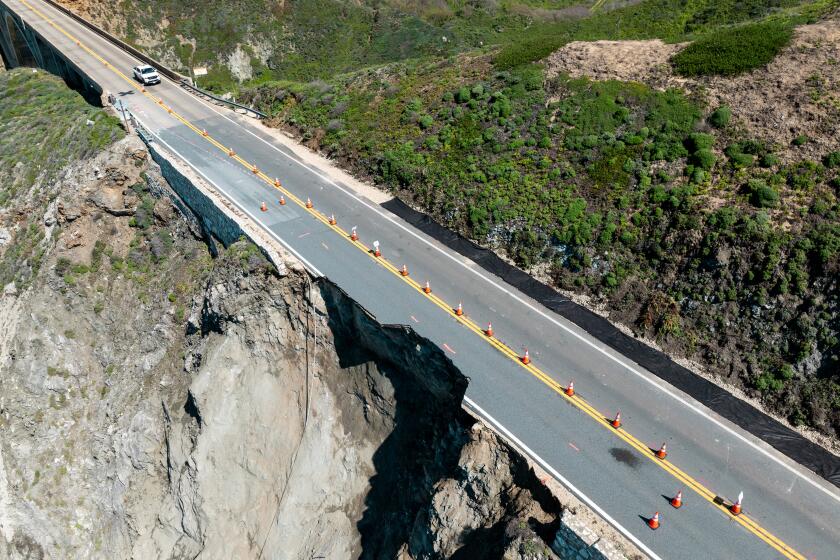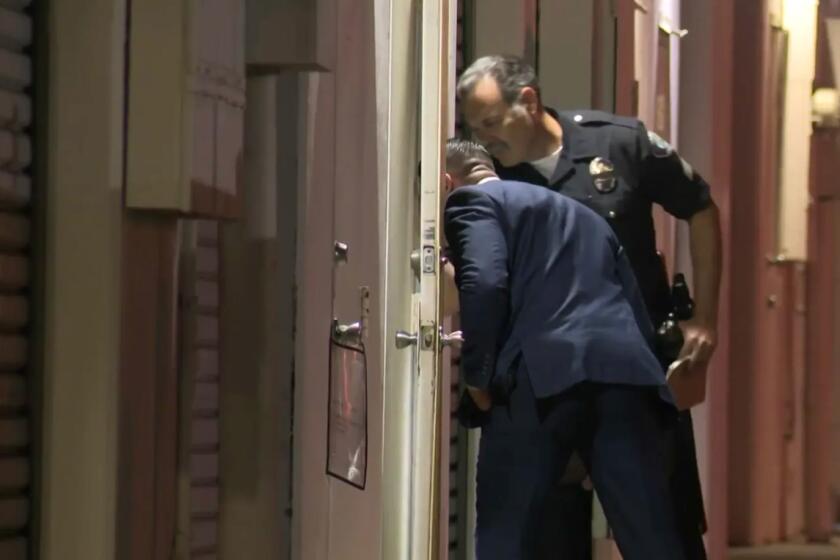They’ll be pouring it on at New Wilshire Grand site
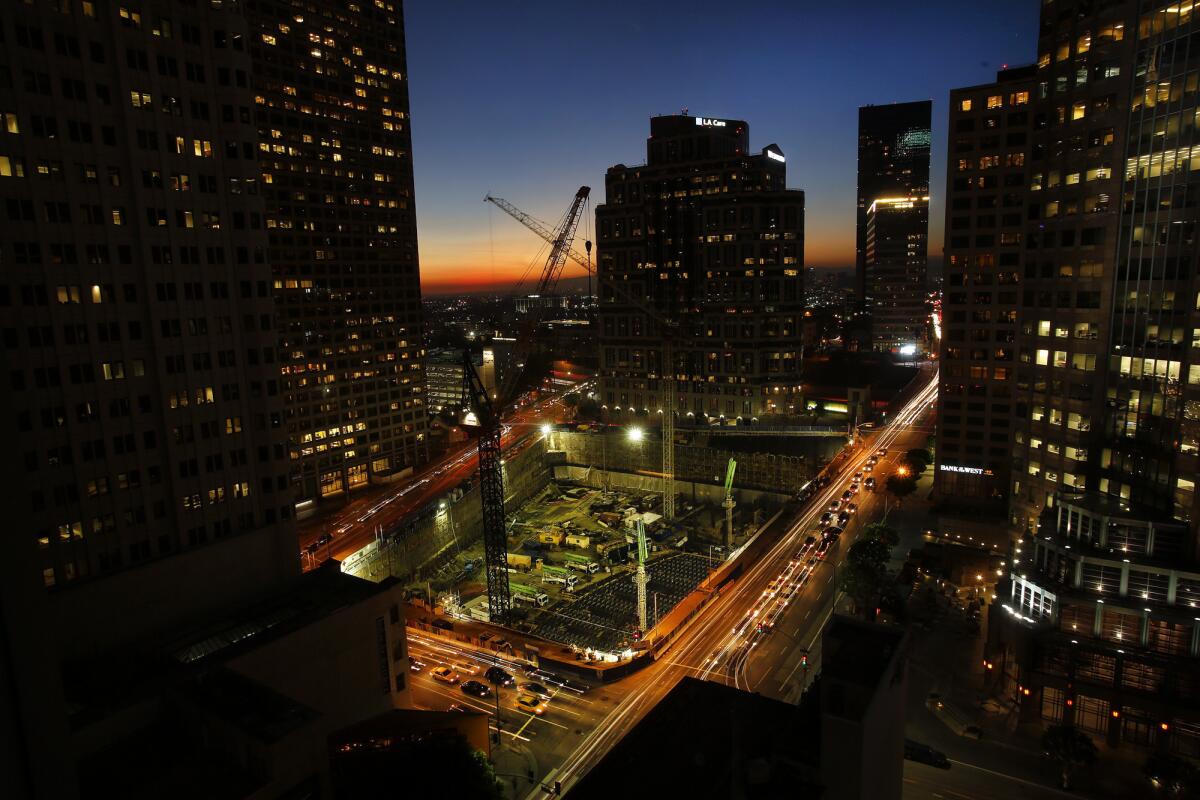
The latest addition to the Los Angeles skyline — the New Wilshire Grand, the tallest structure to be built west of the Mississippi — takes a major step forward Saturday when more than 2,000 truckloads of concrete are driven through downtown for what is being billed as the world’s largest continuous concrete pour.
The slurry-fest begins at 5 p.m. and is expected to last nearly 20 hours. Wilshire Boulevard and 7th and Figueroa streets in the vicinity of the construction site will be closed from noon Saturday to 10 p.m. Sunday.
Visitors can take in the bright lights and the armada of trucks from the sidewalks of Figueroa Street and Wilshire Boulevard.
Hyperbole comes easy when considering a building as ambitious as the New Wilshire Grand, which will have an outdoor terrace and a swimming pool on the 73rd floor. But any superlatives about the foundation — namely, that it was poured without interruption — will be verified by an official from Guinness World Records.
An hour before the concrete begins to flow, the USC marching band will lead a parade beside the construction site. There will be speeches from Yang Ho Cho, chairman of Korean Air, which is developing the project; Chris Martin, chief executive of AC Martin Partners, the project’s architect; Assembly Speaker John A. Pérez; state Sen. Kevin de León; Mayor Eric Garcetti; and City Councilman Jose Huizar.
Aside from being a engineering first, the work this weekend is one of the most critical junctures of the project, which is estimated to cost more $1 billion.
“There has been a great deal of construction to get us here,” said Michael Marchesano, general superintendent with Turner Construction Co., which is building the New Wilshire Grand. “But it’s not been particularly rewarding because it has all been below grade. This pour allows us to go vertical, which makes everyone happy.”
Once the site of the 16-story Wilshire Grand Hotel, this city block has been in a state of rubble and ruin for more than a year. The New Wilshire Grand will feature five levels of subterranean parking, convention space, office suites and a 900-room hotel in the signature tower, which will rise 1,100 feet from the street to the top of its architectural spire.
The logistics for the pour are daunting. Crews have been preparing the site for five months, excavating a pit 18 feet deep and nearly two-thirds the size of a football field. Ironworkers have lined the pit with nearly 7 million pounds of reinforcing steel, to which nearly 84 million pounds of concrete will be added.
Other foundations are commonly poured in sequences and connected with reinforcing steel and ancillary slabs of concrete, but the engineers for the New Wilshire Grand insisted this foundation be created in one piece to provide the tower with greater structural support.
The major challenge is to make sure the concrete arrives on time. Because it must be poured within 90 minutes of being mixed, CalPortland Co. will have 208 concrete trucks on the freeways as they make as many as 10 deliveries each to the site over the weekend. Eight batch plants — with one backup — have been enlisted to produce the mixture; each plant is no more than 20 miles from downtown.
Once on site, the trucks will offload the concrete into 19 pumps, which will dispense it through 13 hoses into the pit.
The most critical part of the pour will take place after the last truck leaves and the concrete starts to harden, a process that will take about two weeks. During this time, the concrete will heat up as it begins to set.
The heat dissipates in most concrete pours, but because of the size and depth of this foundation, the temperatures will only increase, which can compromise the integrity of the concrete. To avoid this problem, Turner will cool the concrete by pumping 45-degree water through nearly 100,000 feet of polyethylene hoses strung throughout the pit.
Twenty-four sensors throughout the foundation will record the temperatures on a hourly basis, and, assuming that Los Angeles isn’t hit by a sudden heat wave, the concrete should hover comfortably between 120 and 160 degrees.
Fail-safe procedures are in place as well. Alternative routes have been mapped in case of freeway tie-ups. Additional chillers for the cooling water are on stand-by if one of the machines breaks down. More piping is available if the radiator system springs a leak.
“There are so many variables in projects like these,” said Gerard Nieblas, president of the engineering firm Brandow and Johnston, which designed the structure. “You try to minimize them as much as possible. We’re lucky if we get 99% of them, but with the foundation, we want to hit 100%.”
More to Read
Start your day right
Sign up for Essential California for news, features and recommendations from the L.A. Times and beyond in your inbox six days a week.
You may occasionally receive promotional content from the Los Angeles Times.




